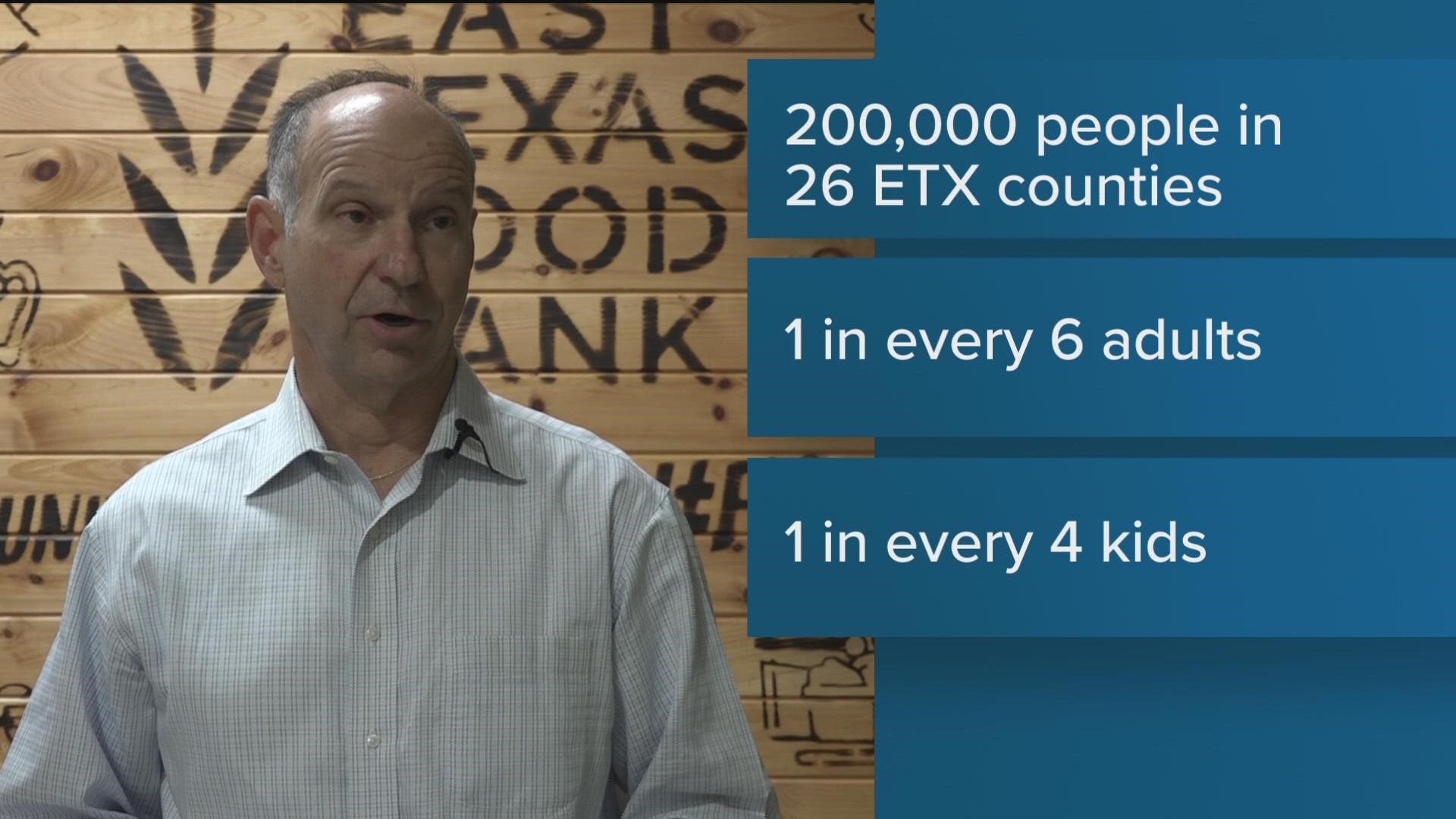TYLER, Texas — With inflation on our heels, it's been hard for many families to afford food.
Especially healthy and affordable food, which is hard to find in rural parts of East Texas.
"300,000 people in our 26 counties are food insecure. That’s one in every six adults, one in every four children, who may not know where their next meal is coming from," said Dennis Cullinane, CEO of the East Texas Food Bank.
Uncertainty around something many of us take for granted.
"Our low income/low access population is huge – it’s probably one of the largest in the state," said Cullinane.
Low income and low access – those are terms the USDA is using to determine areas that are most prone to food insecurity.
"In their latest research, they found that 39 million people in the U.S. live in a low income or low accessibility area in the one and 10 mile area. In addition, the number of people who lived in a low income area reduced by two percent from 2015 to 2019 and the number of large grocery stores rose from 2010 to 2019.
"Not having access to healthy and affordable food can make it difficult for some households or induvial to achieve food security and a healthy dire because the closest grocery store may be further away," said Alana Rhone, Agriculture Economist with the USDA.
Which is why local non-profits, like the East Texas Food Bank, are trying to close the gap where accessibility to food is lacking.
"...A food pantry or a farmers market, or community garden, is definitely important to note. It is giving people more access to healthy and affordable foods...," said Rhone.
In rural areas, the options are more limited.
"Convenience stores, small mom and pop stores, dollar stores or even stores that attached to gas stations – food marts..." said Madhura Maiya, Clinical Assistant Professor of Nutrition at UT Tyler. She says having a proper representation of the food rainbow on our plates can help us avoid health problems down the road.
"It supports optimal growth, but as adults, we are able to maintain our health and we are able to prevent certain diseases and it really promotes optimal health," said Maiya.
And it’s mobile food distributions that are helping to close the gap between low income and low accessibility areas here in East Texas.
"I can take this to people who don’t have vehicles or stuff and give it around and I take it to them and bless them with it," said Johnnie Isaac, Longview resident.
"...You know, the economy is going up and it’s getting harder and harder with the increase of the economy period," said Edith Hirth, Longview resident.
"It’s a challenging program for us to meet the needs for, but it’s really surgical to meet the needs of these communities," said Cullinane.
So what is the solution?
Well, it really comes down to two factors: Having more grocery stores built in our rural communities and also having more community driven programs, like community gardens, to have healthier foods in our rural areas.

